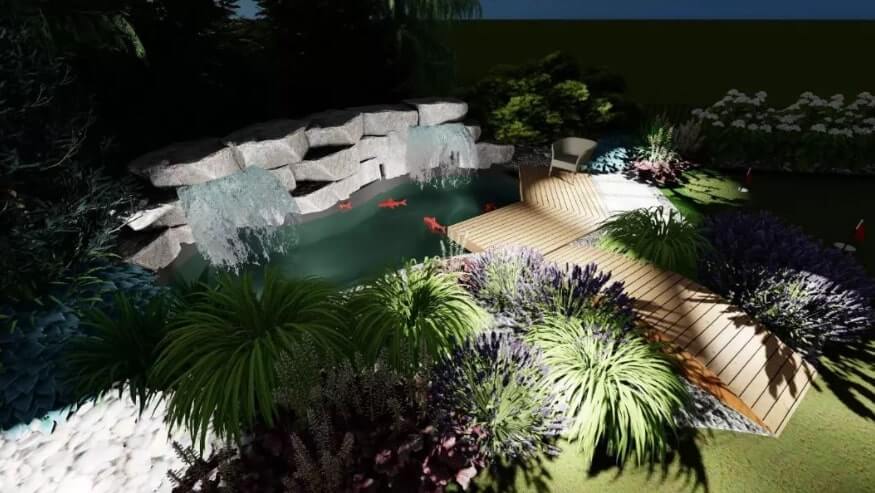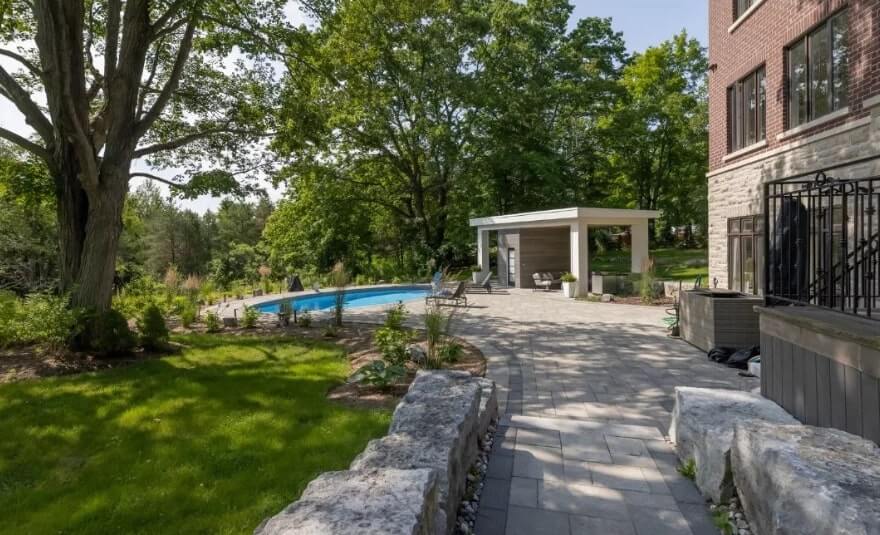
In the realm of landscape design, finding the ideal balance between hardscape interlocking and garden space is akin to mastering a delicate dance between structure and nature. Both elements play crucial roles in shaping outdoor environments, offering distinct benefits and aesthetic appeal. So, let's explore how to achieve harmony between the solidity of hardscape interlocking and the organic beauty of garden space.
However, before we venture any further, we must consider the ramification of having more hardscape or softscape. In many pockets of the city, there are a ratio of hardscape to softscape ratio, and this is to control the water run off. Yes we all want more patio space, but we also don’t want to have our neighbour’s run off water. So check in with your city to see what is the ratio first, before you venture on.

First, let's define our players. Hardscape interlocking refers to the use of hard, durable materials such as pavers, bricks, or stones to create functional surfaces like patios, walkways, and retaining walls. These elements provide structure, define spaces, and facilitate movement within the landscape. On the other hand, garden space encompasses the soft, living elements of a landscape, including plants, flowers, shrubs, and trees. Gardens add color, texture, and vitality to outdoor areas, creating inviting and dynamic environments.
Now, let's talk balance. Achieving the perfect mix of hardscape interlocking and garden space involves thoughtful planning and consideration of various factors, including aesthetics, functionality, maintenance, and personal preferences.

Aesthetically, striking a balance between hardscape and garden elements involves creating visual interest and harmony within the landscape. Too much hardscape can result in a harsh, overly structured environment, while an excess of greenery may appear chaotic or unkempt. The key is to integrate hardscape features seamlessly with garden spaces, using them to complement and enhance one another. For example, a well-designed patio surrounded by lush plantings can create a tranquil outdoor retreat, blending the beauty of nature with the functionality of built elements.
Here is where it gets extra tricky. The factor of lifestyle. Many people opt in for more hardscape surfaces, as it is much easier to maintain since there are almost next to no weed that can pop up in these surfaces. However, this will create a sterile space that often look hard, and actually feels HOT. More hardscape surface will often make the space a lot more hotter as these material absorbs heats. And you will notice that it is very LOUD in these spaces, as sound will easily bounce off of pretty much everything.

Functionality is another crucial aspect to consider when balancing hardscape and garden space. Hardscape elements provide essential infrastructure for outdoor living, offering areas for dining, entertaining, and relaxation. Well-placed walkways and pathways guide visitors through the landscape, while retaining walls and edging define garden beds and prevent erosion. By strategically incorporating hardscape features, you can maximize the usability and enjoyment of your outdoor space, creating zones for different activities while maintaining a connection to nature.
And in our city context, where storm water management has been a constant challenge, we would need all the garden space as we can get!
Maintenance requirements also factor into the equation when deciding on the mix of hardscape and garden space. While hardscape elements generally require less upkeep than gardens, they are not maintenance-free. Paved surfaces may need periodic cleaning, sealing, and repair to keep them looking their best. On the other hand, gardens require ongoing care, including watering, weeding, pruning, and fertilizing. When planning your landscape, consider your maintenance capabilities and preferences, opting for a balance of hardscape and garden elements that suits your lifestyle and resources.
Finally, personal preferences play a significant role in determining the ideal mix of hardscape interlocking and garden space. Some homeowners may prefer a more formal, structured landscape with extensive hardscape features, while others may lean towards a softer, more naturalistic design with abundant greenery. By understanding your preferences and vision for your outdoor space, you can create a landscape that reflects your personality and enhances your enjoyment of your property.

In conclusion, achieving the perfect mix of hardscape interlocking and garden space involves finding a harmonious balance between structure and nature. By considering aesthetics, functionality, maintenance, and personal preferences, you can create a landscape that is both beautiful and functional, blending the solidity of hardscape elements with the organic beauty of garden spaces. So, whether you prefer a formal courtyard or a wildflower meadow, remember that the key to a successful landscape lies in finding the perfect balance between hardscape and garden elements.


